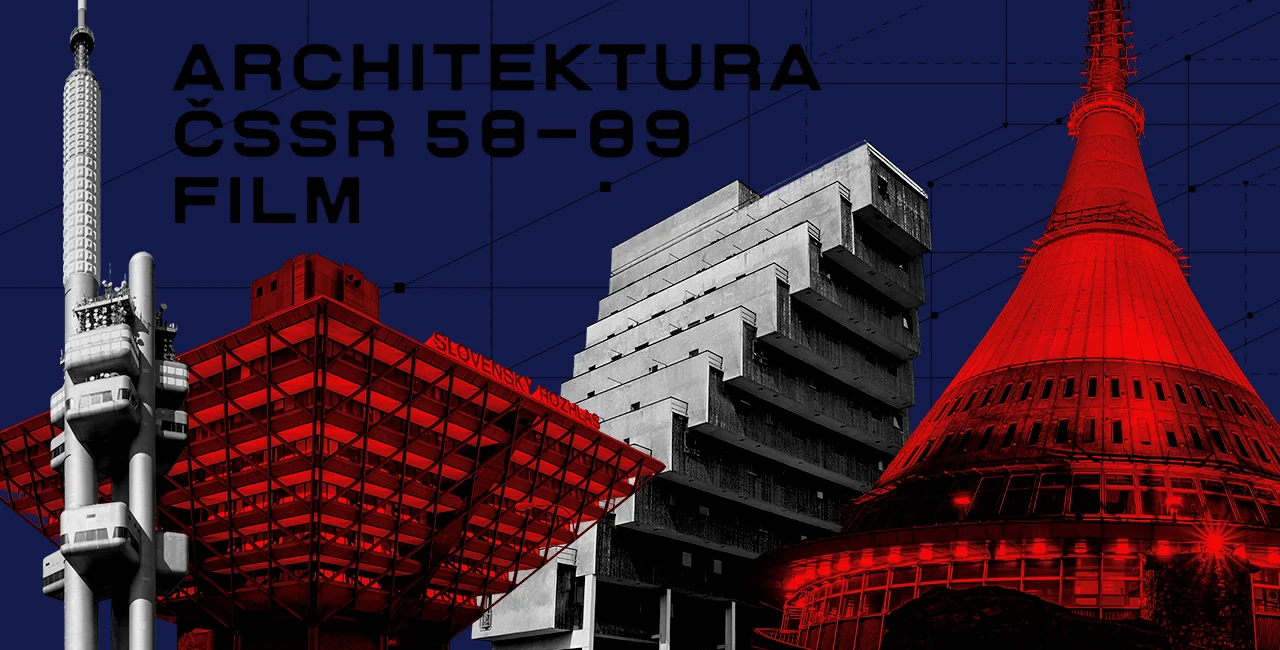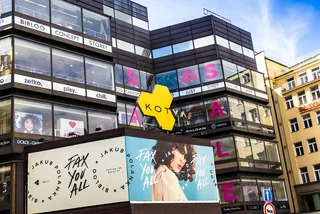Can something as utilitarian as a power plant be a work of art? Are the stark, concrete giants looming over Czech and Slovak cities hideous reminders of a dark past or geometric wonders?
A new documentary film, Architektura ČSSR 58–89, directed by Jan Zajíček and co-conceived by multimedia artist and musician Vladimir 518, reexamines the complex legacy of Czechoslovak architecture built between 1958 and 1989.
The film, set for widespread distribution in Czechia in November, reveals how Czech and Slovak architects balanced innovation and state mandates to create structures that rivaled Western trends despite being confined within an Eastern Bloc aesthetic.
The film's creator Vladimir 518, a fixture in the Czech alternative scene and author of the accompanying book Architektura 58–89, believes Brutalist landmarks like the once-maligned Žižkov Television Tower or the Kotva Department Store are defined by contradictions.

“Every period of architecture is unique and worthy of attention. The post-war period carries a great desire for aesthetic and technological experimentation, a huge struggle to ensure that world-class architecture could be built behind the Iron Curtain. The buildings from this era are often very expressive, sculptural, and impossible to overlook in our cities,” says Vladimir.
Shot over seven years, the film showcases concrete behemoths and boxy high-rises while bringing to light the stories, political tensions, and creative energy behind the country’s most polarizing buildings.
“What fascinates me most is the bravery of the most progressive architects of that period,” says Vladimir. “They pushed against the dominance of Socialist Realism and kept looking for a new, international expression—even in the face of technological and political barriers.”
Architecture that refused to conform
Architektura ČSSR 58–89 revisits a postwar architectural era in Czechoslovakia that saw designers pushing the boundaries of state-imposed restrictions. The film traces the style’s evolution from the optimistic buzz of Expo 58 (which put Czechoslovak modernism on the global map) to the slow unraveling of the Communist regime in the 1980s that shaped the urban landscape today.
Viewers will be taken on a cinematic tour of civic projects like the inverted pyramid of the Slovak Radio Building and landmarks such as the avant-garde Ještěd TV Tower and Hotel, which earned architect Karel Hubáček the prestigious Perret Prize. Filmmakers were also given access to spaces rarely open to the public, from the sprawling halls of the former Federal Assembly Building in Prague to the bizarrely elegant Slimák shopping center in Bratislava.
Zajíček interviews a who’s who of Czechoslovak architecture, including Alena Šrámková, who fought for aesthetic innovation amid oppressive regulations, and Martin Rajniš, whose designs sought to blend utility and daring modernism. The film features notable personalities like Karel Prager, whose legacy lives in many of Prague’s most distinctive buildings.
“Of course, there’s a strong aesthetic to it all, but what drew me most was the story,” says director Jan Zajíček. “I’m captivated by the context, the relationships, the struggles, and the societal dramas behind these concepts and the completed buildings.”
From Prague’s InterContinental to Slovakia’s upside-down pyramid
The Czech Republic and Slovakia maintain a love-hate relationship with Brutalism. While some buildings, like Prague’s InterContinental Hotel, are being restored and celebrated, the film also explores demolished icons, like the divisive Transgas building in Prague, with the production team capturing rare footage of its dismantling in 2020.
While many of these “relics of communism” face uncertain futures as investors and developers target them for demolition, the filmmakers hope the documentary will spark a larger conversation about how Brutalist structures are preserved, while showcasing their impact on the international design community.
“The goal wasn’t to create an encyclopedic overview of unique post-war buildings, but to capture, through the personal stories of the architects, the fascinating and extraordinary creative energy embedded in these structures, despite the era’s challenges. The public debate about demolishing these buildings without thought plays an important role in the film,” says Zajíček.
With its simple yet daring design, Brutalism is experiencing a revival worldwide as nostalgia for mid-century Modernism grows. For filmmaker Vladimir 518, the revival makes sense: “For me, it all started with simple curiosity, a need to learn more about the buildings that strongly shaped my childhood.”












 Reading time: 3 minutes
Reading time: 3 minutes 


 English
English
 Danish
Danish
 Slovenian
Slovenian
 Swedish
Swedish
 Polish
Polish
 French
French
 Spanish
Spanish





















